What's New
Displaying results 3961 - 3970 of 4052
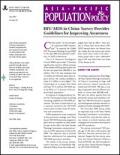
Resource | Publications,
In response to rising prevalence levels, the Chinese government is placing increasing emphasis on HIV/AIDS prevention. The State Council has set up a national committee for HIV/AIDS control with members from 26 ministries and commissions.
Public awareness is a key component of any prevention strategy, and China has an HIV/AIDS awareness program in place with an emphasis on mass media. As part of this effort, the State Family Planning Commission conducted a survey on AIDS awareness in December 2000. The objective was to provide baseline information for expanding HIV/AIDS prevention activities.

Resource | Publications,
The overall objective of Nepal’s strategy for HIV/AIDS is to contain the HIV/AIDS epidemic in Nepal. The vision of the National Strategy is to expand the number of partners involved in the national response and to increase the effectiveness of the response. It will do this by focusing on activities within priority areas thereby optimising prevention and reducing the social impact of HIV/AIDS in the most cost-effective manner.
Nepal’s “National HIV/AIDS Strategy 2002-2006” has been designed to guide the expanded response to the HIV/AIDS epidemic in Nepal. An expanded response requires the commitment of all sectors, not just health, both within and outside government, and the coordinated support of external development partners. This strategy will promote and facilitate the coordination of their involvement.
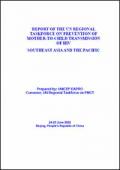
Resource | Publications,
The South East Asia and the Pacific UN Regional Taskforce on Prevention of Mother- to- Child Transmission (PMCT) convened its 3rd meeting in Beijing, People Republic of China from 23-24 June 2002. A total of 35 professionals participated in this two-day meeting. Participants discussed the country level PMCT experiences to-date and latest technical information and how these could be applied for their respective PMCT country programme. This report summarized the discussion according to the following (seven key programme components).
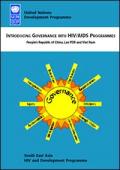
Resource | Publications,
Good governance has been recognized by UNDP as a critical element in the reduction of HIV vulnerability. Right from its start, the UNDP South East Asia HIV and Development Programme has emphasized the importance of introducing dimensions of good governance into development strategies aimed at combating HIV/AIDS epidemics. The presentation of this message to a forum of Asian Parliamentarians at the end of 1999 resulted in the publication of the first article of this issue which links HIV prevention and good governance.
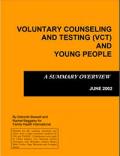
Resource | Publications,
Voluntary HIV counseling and testing (VCT) is much more than drawing and testing blood and offering a few counseling sessions. It is a vital point of entry to other HIV/AIDS services, including prevention and clinical management of HIV-related illnesses, TB control, psychosocial and legal support, and prevention of mother to child transmission of HIV. High- quality VCT enables and encourages people with HIV to access appropriate care and is an effective HIV- prevention strategy. VCT can also be an effective behavior-change intervention. VCT offers a holistic approach that can address HIV in the broader context of peoples’ lives, including the context of poverty and its relationship to risk practice.
VCT offers benefits to those who test positive or negative. VCT alleviates anxiety, increases clients’ perception of their vulnerability to HIV, promotes behavior change, facilitates early referral for care and support—including access to ARV therapy—and assists in reducing stigma in the community.
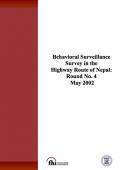
Resource | Publications,
The Behavioral Surveillance survey (BSS) for HIV prevention is based on serologic sentinel surveillance survey methods used in many countries to detect the emergence of HIV and monitor epidemic trends. Behavioral surveillance surveys are systems for quantatively assessing sexual behavior change, consisting of structured questionnaires, administered periodically to samples of target group specific geographic areas.
This survey is the fourth round of the BSS conducted in the highway route of the FHI project area. Like in the previous rounds this survey also provides the data that is compared against data obtained in the previous rounds.
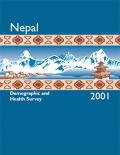
Resource | Publications,
The 2001 Nepal Demographic and Health Survey (NDHS) is a nationally representative survey of 8,726 women age 15-49 and 2,261 men age 15-59. This survey is the sixth in a series of national-level population and health surveys and the second comprehensive survey conducted as part of the global Demographic and Health Surveys (DHS) program, the first being the 1996 Nepal Family Health Survey (NFHS). The primary purpose of the NDHS is to generate recent and reliable information on fertility, family planning, infant and child mortality, maternal and child health, and nutrition. In addition, the survey collected information on knowledge of HIV/AIDS.
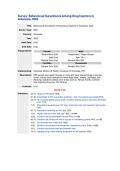
Resource | Data Sheets,
National Baseline BSS among Men Who Have sex with Men(MSM) was conducted in 5 cities/States across the country: Delhi, Mumbai, Kolkatta, Chennai, Bangalore. Topics included in the questionnaire: Background Characteristics, Knowledge, Opinion and Attitude towards STI/HIV/AIDS, Sexual History, Male Partner, Risk Perception and Exposure to Intervention.
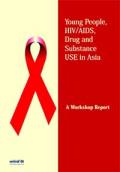
Resource | Publications,
The inter-regional workshop ‘Young people, HIV/ AIDS, Drug and Substance Use in Asia’ organized jointly by the UNICEF East Asia and the Pacific Regional Office (EAPRO) and the Regional Office for South Asia (ROSA), in collaboration with UNDCP Regional office for South Asia, took place in Kathmandu, Nepal, from 18 – 22 March 2002. It brought together a total of fifty-eight participants from the various government ministries, the NGO sector as well as UNICEF staff from eleven countries in South and South East Asia.

Resource | Publications,
In spite of recent decades of unprecedented economic growth and industrialization in South East Asia, the bulk of economic activity is still based on agricultural production in rural areas. While urbanization continues to be a key demographic trend, most people still live in rural areas working in the agricultural sector. This is especially the case for Cambodia where an estimated 11.5 million people, or 80 per cent of the population, are living and working in rural areas. In Cambodia, as elsewhere in South East Asia, rural populations, due to their sheer size, must be at the center of any effective national programme to mitigate the socio-economic impact of HIV/AIDS.





